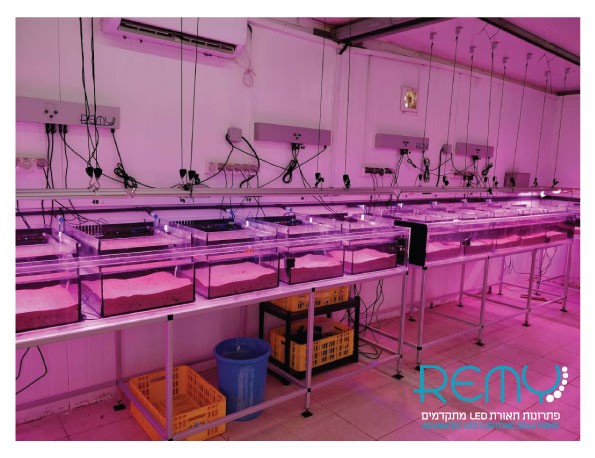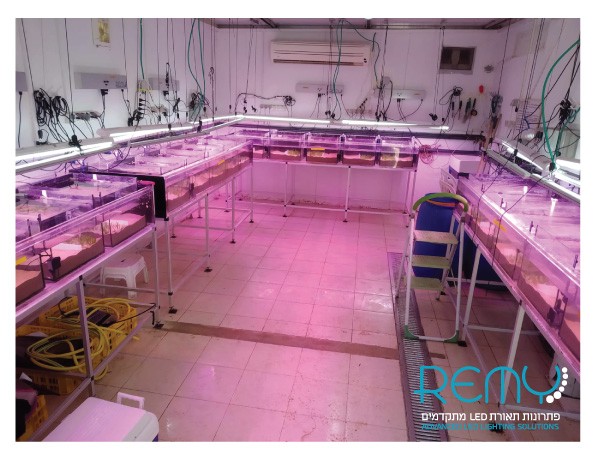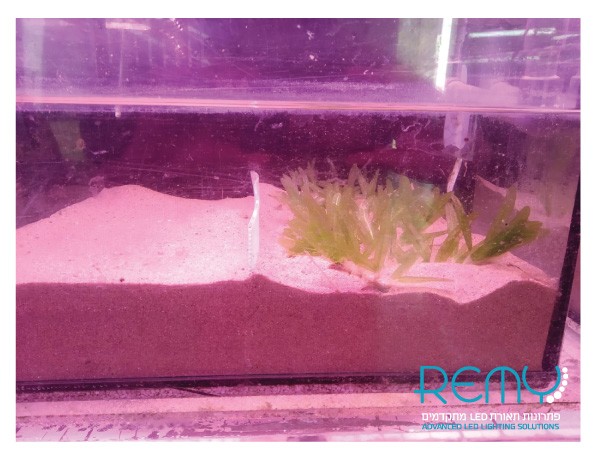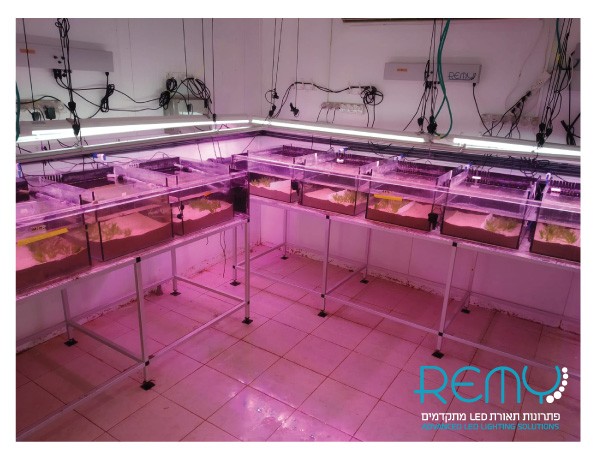See grass research center | MOP ARAVA
May 2019
When Dr. Gideon Winters, from MOP ARAVA research center, approached us for upgrading the agronomic lighting in his lab, we got in the car and took the three-hour drive south to Hatzeva to see what it’s all about.
It turns out it’s about an international experiment that investigates the effect of global warming on sea grass.
The requirement of tripling light intensity compared to the florescent they had, while enabling a dynamic spectrum, dominated by blue wave-length was not a common or standard one. But these are exactly the challenges the “light us up” and at the end of the day, make us better.
We immediately got into light planning and simulations of solutions and went ahead to get the technical, agronomic, financial approval to place the order and start production.
Some projects are complex and challenging, and we admit we won’t always succeed in providing a problem-free solution from the get-go. The more moving parts and customization the more room to experience bumps in the road.
The understanding that our projects end when the lights turn on and do what their supposed to do, keeps us involved and focused on execution.
It wasn’t a smooth ride with this one, but we would not let it go. We kept in touch and were present throughout the experiment, to make sure the systems will provide results according to customer physical, agronomical and operational requirements.
We are proud! The lighting fixtures, planning and service we provided met great cooperation, patience, understanding and trust from the client’s side. And we lit a sea grass study, one of many, that can affect the whole world and bring insights on the global climate crisis.
How will all this happen? Don’t look at us, we just provided the lighting.
We owe a great thanks to Dr. Gideon Winters for the education, hospitality, patience, trust and cooperation.
We wish ourselves many more challenges and clients of this kind.





